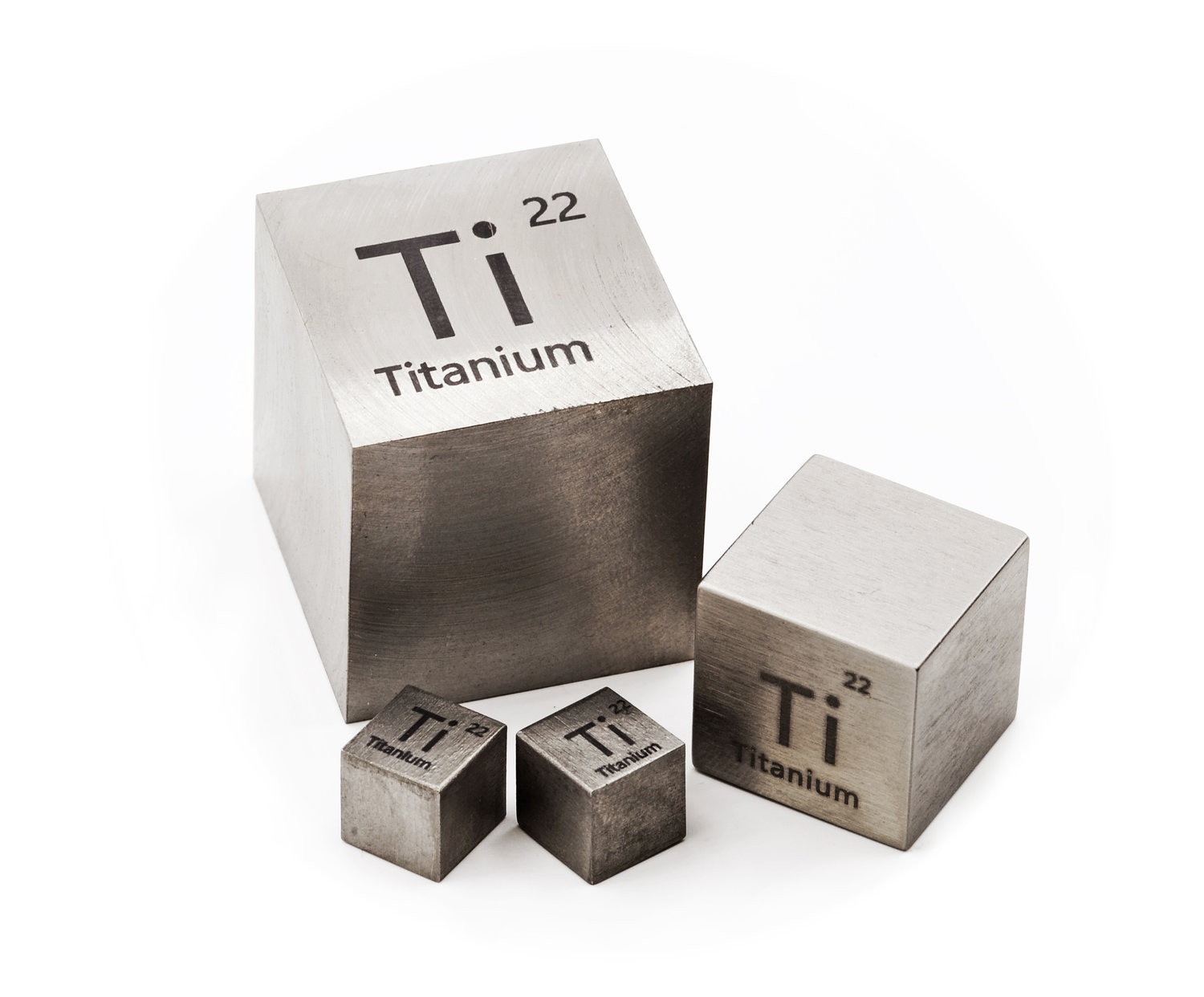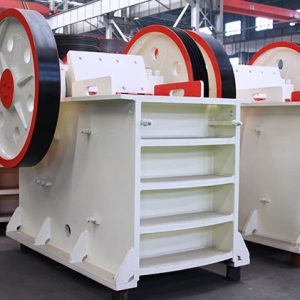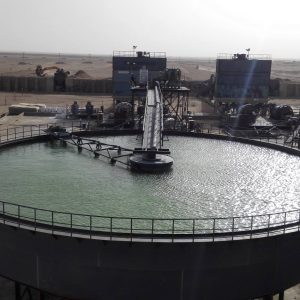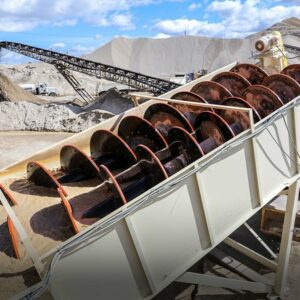Description
Titanium is a chemical element with the symbol Ti and atomic number 22. It is a lustrous transition metal that has a silver color, low density, and high strength. Titanium is resistant to corrosion in sea water, aqua regia, and chlorine.
Relation to Mining
Titanium is the ninth-most abundant element in Earth’s crust (0.63% by mass) and the seventh-most abundant metal. It exists as oxides in most igneous rocks, sediments derived from them, living organisms, and natural bodies of water. Out of the 801 types of igneous rocks analyzed by the United States Geological Survey, 784 contained titanium. Its presence in soils ranges from approximately 0.5% to 1.5%.
Common titanium-containing minerals include anatase, brookite, ilmenite, perovskite, rutile, and titanite (sphene). Akaogiite is an extremely rare mineral composed of titanium dioxide. Among these minerals,rutile and ilmenite are economically significant; however they are still challenging to find in high concentrations.In 2011,the mining production for these minerals was about6 million tonnes for rutileand0.7 million tonnes for ilmenite.Significant deposits of titanium-bearing ilmenite can be foundin western Australia ,Canada ,China ,India,Mozambique ,New Zealand,Norway,Sierra Leone,South Africa,and Ukraine.The global reservesof titaniumare estimatedto exceed600milliontonnes.
Uses
Titanium can be alloyed with iron aluminum,vanadium,molybdenum,and other elements,to produce strong lightweight alloys usedin aerospace(jet engines missiles spacecraft),military applications industrial processes(chemicals petrochemicals desalination plants pulp paper),automotive industry agriculture(farming),medical field(prostheses orthopedic implants dental endodontic instruments files dental implants),sporting goods,jewelry,mobile phones,and various other applications.
Titanium Mining Process
Gravity & Flotation Separation Process
The gravity separation process is mainly used for large-scale titanium mines with coarse granularity. Once crushed, the titanium mine will be sent to the magnetic separator and then to the spiral chute for further separation. Flotation separation is then employed for higher granularity.
Magnetic & Flotation Process
To reduce flotation separation costs, magnetic separation will be utilized as the initial step. The finely granulated titanium mine will subsequently undergo flotation separation. This method significantly reduces the amount of flotation reagents required and allows for easy operation.
Classification Joint Beneficiation
Following classification, qualified titanium mine granules can be subjected to gravity separation in order to obtain titanium concentrate. This approach yields a high recovery rate.
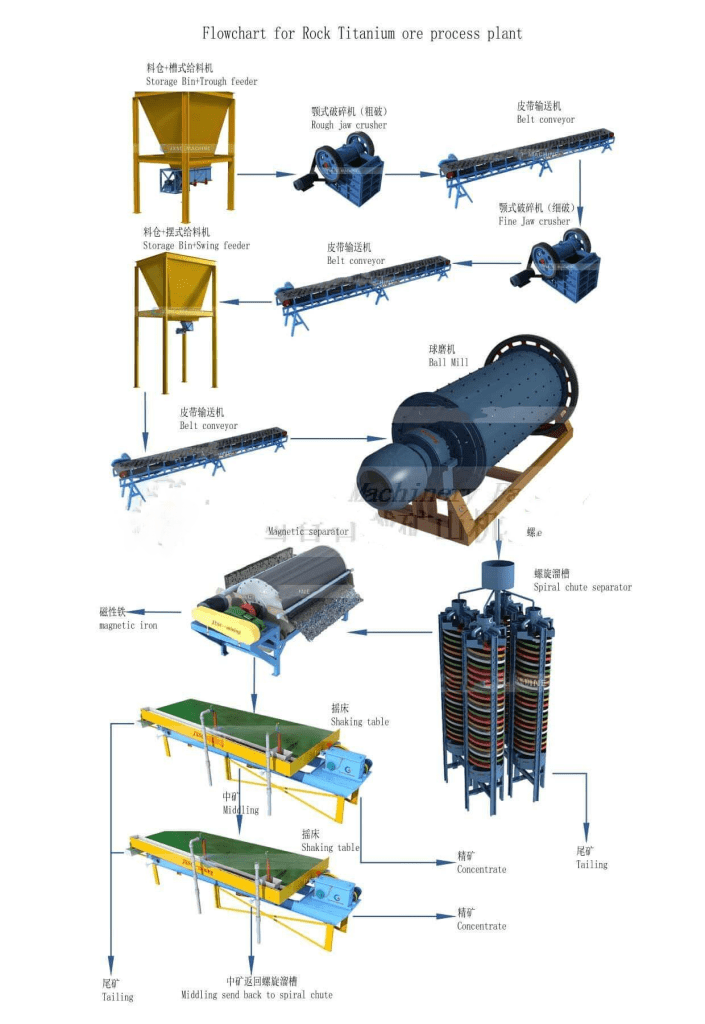
We have discovered that titanium is a crucial metal with diverse applications across various industries. The increasing market demand for titanium products, including titanium dioxide, titanium alloys, and pure titanium, has garnered significant public interest in the processing of titanium ore.
Titanium minerals primarily come from two sources: titanium rock ores and titanium placers.
Titanite rock ores are predominantly found as titanomagnetite-ilmenite deposits. Major producers include Canada, China, India, and Russia.
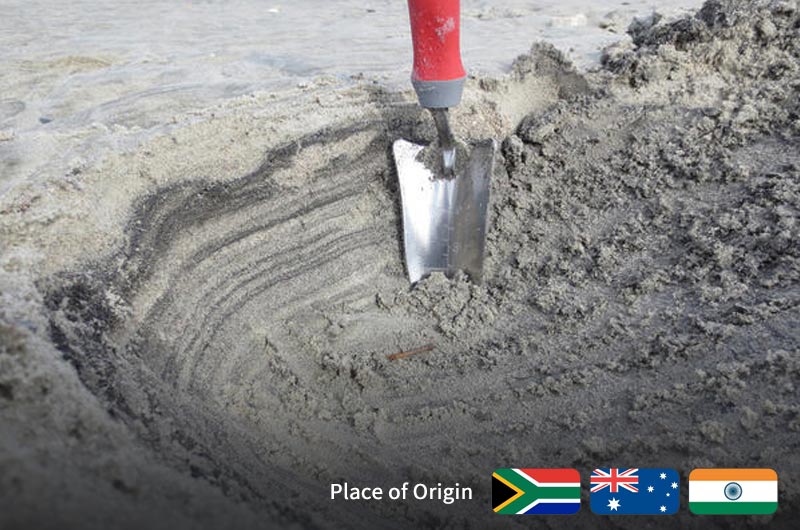
Author: Jordan
Last Updated: May 27, 2023
From the blog “Titanium: Metal of the 21st Century,” we learned that titanium is an essential metal with a wide range of applications in various industries. The increasing market demand for titanium products, such as titanium dioxide, titanium alloys, and pure titanium, has drawn public attention to the processing of titanium ore.
Titanium minerals mainly come from two sources: titanium rock ores and titanium placers.
Titanium rock ores are primarily found in the form of titanomagnetite-ilmenite. Major producers include Canada, China, India, and Russia.
Origin: Titanium rock ore
Titanium placers, also known as titanium sands, are predominantly composed of ilmenite-rutile deposits. Most mines contain mostly ilmenite with a few dominated by rutile. Titanium sand mines can be found in coastal areas and river sediments in South Africa, Australia, India, and South American countries.
Origin: Titanium sands
Currently, most of the world’s titanium resources come from titanium rock ore; therefore this article focuses on its processing.
An efficient plant for processing titanium ore consists of a comminuting unit (crushing and grinding), a beneficiation unit,
and auxiliary equipment.
The commonly used production equipment includes crushers (jaw crushers,
cone crushers), ball mills,
spiral chutes,
magnetic separators,
flotation cells,
etc.
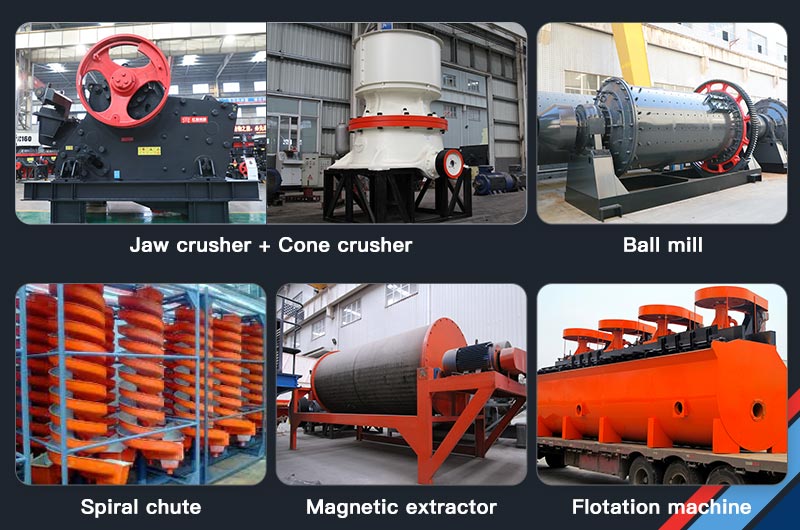
Titanium ore crushing production line
The titanium ore extracted from mines undergoes a crushing and grinding process to obtain powders with consistent particle sizes.
For coarse crushing, employ a jaw crusher, followed by fine crushing using a cone crusher.
For grinding, utilize either a ball mill or a rod mill.
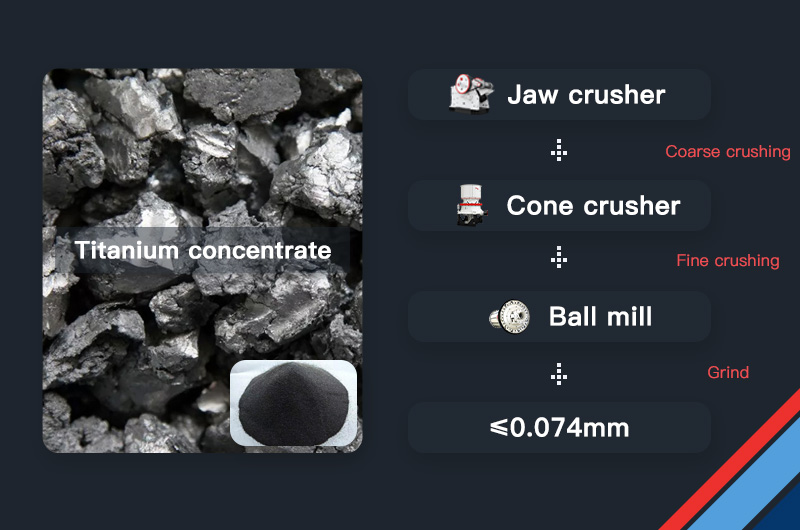
To achieve better flotation results, it is essential to grind the titanium ore to a particle size of less than 0.074 mm.
Titanium Ore Beneficiation Production Line
Gravity Separation
This method is suitable for initially concentrating or pre-treating crushed titanium ore. Through gravity separation, we can effectively separate most gangue minerals with a density below 3g/cm3 from titanium-containing minerals that generally have a density greater than 4g/cm3.
The machines used for gravity separation include jigs, spiral chutes, and shaking tables.
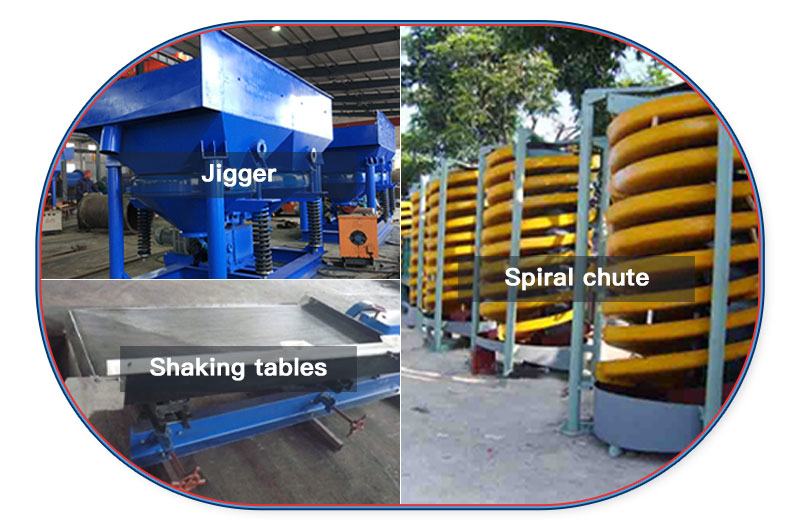
Magnetic Separation
This method is primarily used to further concentrate crude titanium concentrates. We commonly employ low-intensity magnetic separation (LMS) and high gradient magnetic separation (HGMS) for the recovery of titanomagnetite and ilmenite, respectively. This method also addresses the question of how we separate titanium from iron.
The equipment for magnetic separation mainly consists of drum magnetic separators, plate magnetic separators, vertical ring high gradient magnetic separators, etc.
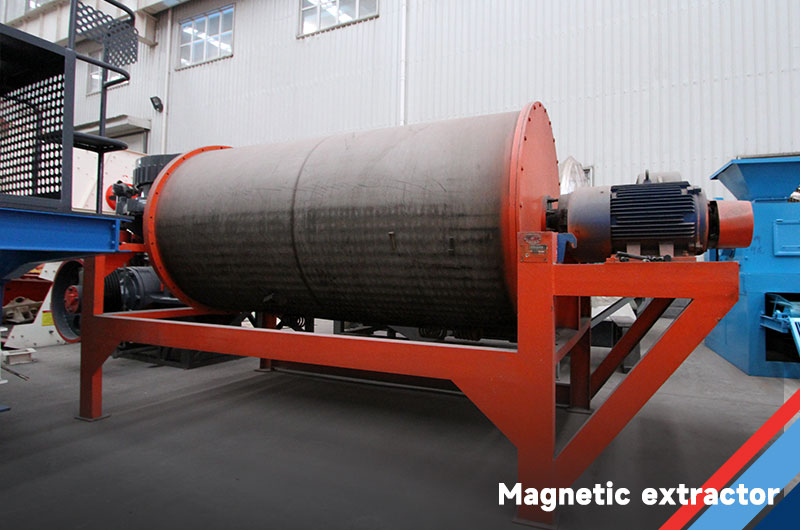
Electrostatic separation
This method primarily relies on the disparity in conductivity among various minerals present in crude titanium concentrates to effectively retrieve titanium minerals. When pyroxene, quartz, and other non-conductive minerals are found within the crude titanium concentrates, electro-separation can be employed to separate the titanium minerals.
The types of electrostatic separators utilized include roller type, plate type, sieve plate type, etc.
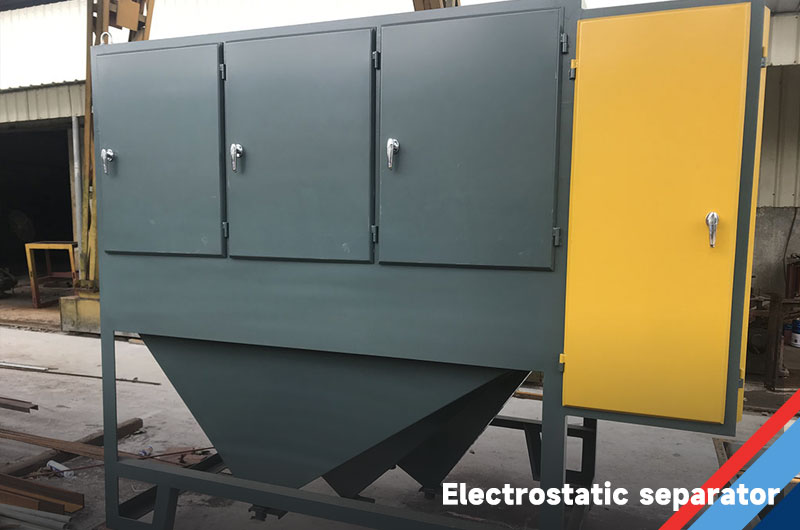
Flotation separation
Flotation is primarily employed for the separation of fine-grained titanium ore. The commonly utilized flotation reagents include sulfuric acid, tar oil, oleic acid, diesel oil, and emulsifier. Beneficiation methods encompass positive flotation for titanium and reverse flotation for gangue minerals.
The commonly employed equipment for flotation is a flotation cell.
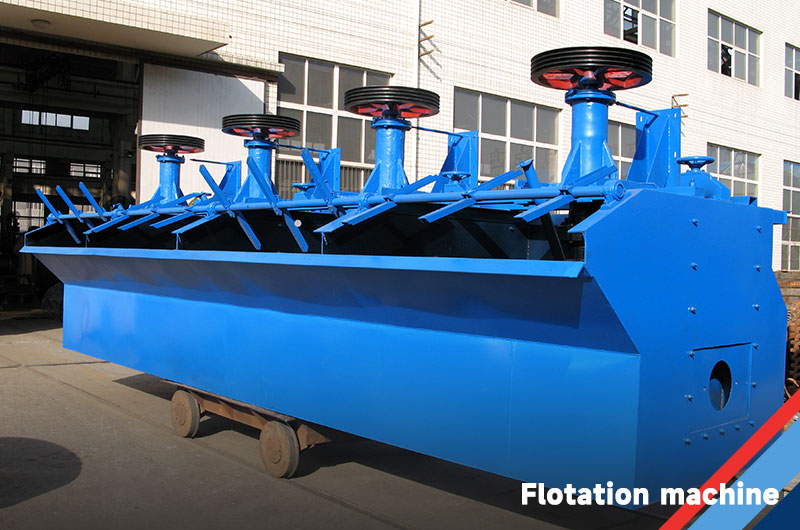
Conclusion
Each of the methods mentioned above has its own advantages, but using them individually to process titanium rock ore yields poor results. Therefore, a combination of multiple beneficiation methods is often employed, with the specific order depending on the circumstances. For instance, in the video below, ground titanium powder undergoes magnetic separation first and then gravity separation.

